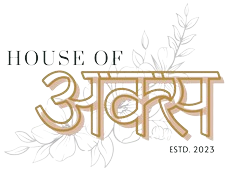Traditional Indian Clothing
Traditional Indian clothing is a vibrant and diverse reflection of the country's rich cultural heritage. Each region of India boasts its unique style, fabric, and design, contributing to a colorful tapestry of traditional attire. From the elegant sarees of the South to the intricate lehengas of the North, Indian clothing represents a blend of tradition and modernity. The traditional Indian dresses are not just pieces of fabric but are deeply embedded with cultural significance, often worn during festivals, weddings, and other special occasions. These garments are crafted with attention to detail, showcasing the artistry and craftsmanship of Indian weavers and designers. Traditional Indian clothing is a symbol of pride and identity, celebrating the diversity and unity of India's diverse cultures.
Exploring Traditional Clothing
Traditional Indian clothing is a fascinating journey through the diverse cultural landscape of India. Each piece of attire tells a story, reflecting the history, traditions, and values of the region it originates from. From the vibrant colors and intricate patterns to the choice of fabrics, every element of traditional Indian clothing is thoughtfully chosen to represent the rich cultural tapestry of the country. This exploration into traditional attire reveals a world where fashion meets history, offering a glimpse into the artistry and craftsmanship that have been passed down through generations. Whether it's the elegant drape of a saree, the regal flair of a sherwani, or the colorful charm of a lehenga, traditional Indian clothing continues to captivate and inspire, serving as a testament to India's enduring cultural legacy.
Regional Variations
Traditional Indian clothing varies significantly across different states, each showcasing unique styles, fabrics, and designs that reflect the local culture and traditions. In the north, the colorful and heavily embroidered lehengas and sherwanis are popular, often worn during weddings and festivals. The west is known for its intricate bandhani and mirror work, prominently seen in the ghagra cholis of Gujarat and Rajasthan. The eastern regions boast the elegant silk sarees of Bengal and Assam, featuring intricate motifs and vibrant colors. Down south, the graceful Kanjeevaram sarees, known for their rich silk and gold borders, are a staple in Tamil Nadu. Each region's traditional attire is a testament to India's diverse cultural heritage, making the exploration of these variations a journey through the heart of India's artistic legacy.
Cultural Significance of the Clothing
Traditional Indian clothing holds immense cultural significance, serving as a powerful expression of identity, heritage, and values. Each garment is more than just a piece of clothing; it is a representation of the region's history, beliefs, and social customs. For instance, sarees and dhotis, often worn during important ceremonies and festivals, symbolize grace and tradition. The intricate designs and vibrant colors used in these garments convey messages of prosperity, joy, and celebration. Additionally, traditional attire is often associated with religious rituals and practices, with specific garments worn during particular ceremonies to honor deities and ancestors. The craftsmanship involved in creating these clothes highlights the skills and artistry of Indian artisans, who have preserved these techniques through generations. By wearing traditional Indian clothing, individuals not only celebrate their cultural roots but also contribute to the preservation and continuation of India's rich cultural heritage.
The cultural significance extends beyond the aesthetic appeal. Traditional Indian clothing serves as a bridge between the past and present, connecting people to their ancestry and the stories of their forebears. Each piece of clothing is imbued with symbolic meanings, often reflecting the wearer's status, age, or marital status. For example, the color red in bridal attire signifies prosperity and fertility, while white is worn during mourning to symbolize purity and peace.
Moreover, traditional clothing plays a crucial role in India's diverse festivals and celebrations, where people don specific attire to partake in the communal spirit and festivities. During festivals like Diwali, Holi, and Navratri, traditional garments become a canvas for expressing joy and unity, with families coming together in vibrant, colorful attire to celebrate these joyous occasions.
The evolution of traditional Indian clothing also mirrors the country's historical and cultural transformations. As India embraced modernity, traditional garments adapted to contemporary styles while retaining their cultural essence. This fusion of old and new showcases the adaptability and resilience of Indian culture, ensuring that traditional clothing remains relevant and cherished in today's world.
In essence, traditional Indian clothing is not just about fashion; it is a living tradition that encapsulates the essence of India's diverse and rich cultural tapestry. By continuing to wear and appreciate these garments, individuals honor their heritage and ensure that the stories and traditions of their ancestors continue to thrive for future generations.
Conclusion
Traditional Indian clothing is not just attire but a vibrant expression of the country's rich cultural tapestry. Each piece, from the sarees of the South to the lehengas of the North, tells a story of India's diverse heritage. These garments are a testament to the artistry and craftsmanship of Indian weavers and designers, reflecting the traditions, values, and identity of the regions they originate from. By embracing traditional Indian clothing, individuals celebrate and preserve the cultural legacy of India, ensuring that these beautiful traditions continue to inspire and captivate future generations.




